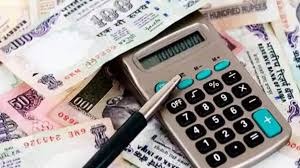Gratuity Calculation: If you’ve worked for the same company for eight years, you can create a fund worth lakhs of rupees through gratuity. Essentially, this is a retirement benefit that everyone receives based on their last salary and service period. It can be easily calculated using a simple formula.
Gratuity will be amazing
Gratuity is a significant financial benefit provided by an employer to an employee in recognition of their service. This amount is only available after an employee has worked continuously for at least five years. Gratuity is typically awarded upon leaving a job, retirement, or termination of service. However, in the event of an employee’s death or serious accident, this amount can be directly transferred to their nominee. The purpose of gratuity is to provide financial security for the employee and their family for the future.
Also Read: Delhi Metro: Names of these three metro stations in Delhi have been changed, know the new names
What does the Gratuity Payment Act say?
Under the Payment of Gratuity Act, 1972, an employee can receive a maximum gratuity of ₹20 lakh. This requires that the employee has worked continuously for at least five years with the same company. However, if an employee leaves the job within four years and 11 months, they cannot receive gratuity. However, this condition does not apply in the event of an employee’s sudden death or a serious accident. In such cases, gratuity is a recognition of the employee’s long service, providing them with strong financial security for the future.
How many years do you need to work in the company?
Gratuity is a financial benefit that companies provide to their long-serving employees as a mark of respect. To qualify, an employee must have worked for the same company for at least five consecutive years. However, if an employee dies or suffers a serious disability, the minimum service period requirement does not apply. According to the Gratuity Payment Act, the maximum limit is set at ₹20 lakh. This amount is not only a token of gratitude to the employee but also ensures their future financial security.
How is the gratuity amount calculated?
The gratuity amount is calculated using a fixed formula: last salary × (15/26) × total years worked. Let’s understand this with a simple example—let’s say you worked for a company for 8 years and your final basic salary + DA is ₹45,000. The calculation would be: ₹45,000 × 15/26 × 8, which totals ₹207,692. This is the amount you will receive as gratuity. This formula ensures the employee receives the perfect financial benefits based on their years of work.
Understand the meaning of 15/26 in calculations
Gratuity is calculated based on 15 days’ salary annually, with only 26 days of the month considered working days, as the remaining four are holidays. The key point is that when calculating service time, one full year is added for more than six months. This means that if an employee has worked for seven years and seven months, the period will be considered eight years. However, if they have worked for seven years and three months, the period will be considered seven years. This rule determines the gratuity amount.
Gratuity formula for employees
According to the Payment of Gratuity Act, 1972, gratuity payments to employees fall into two categories—those covered by this Act and those outside it. This includes both private and government sectors. Gratuity for employees covered by this Act is calculated using a fixed formula: last salary × total service period × 15/26. This formula determines that the longer the service, the higher and more equitable the gratuity.
Tax rules: How much tax is due on gratuity?
The tax rules on gratuity are quite clear. The entire gratuity amount received by government employees is tax-free, but private sector employees (who fall under the purview of the Act) are eligible for a limited exemption. The exemption is available on the lesser of three amounts: a maximum of Rs 20 lakh, or the amount calculated using the formula (last salary × 15/26 × years of service), or the actual gratuity. If the gratuity exceeds this amount, the remaining amount is taxable. This amount is added to the individual’s other income and calculated according to the applicable tax slab. (Note: This news is based on general information)
Also Read: Akasa Air flights: Services to commence from Navi Mumbai airport from December 25


